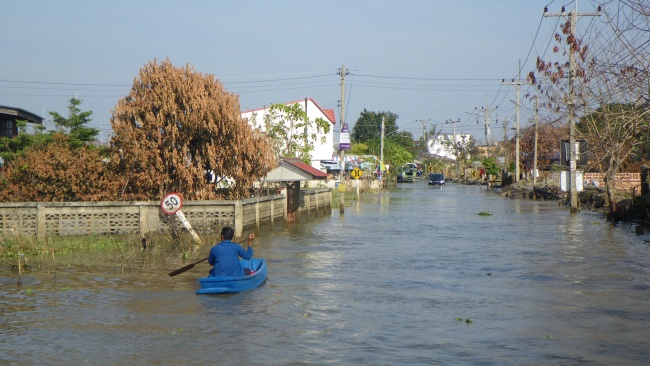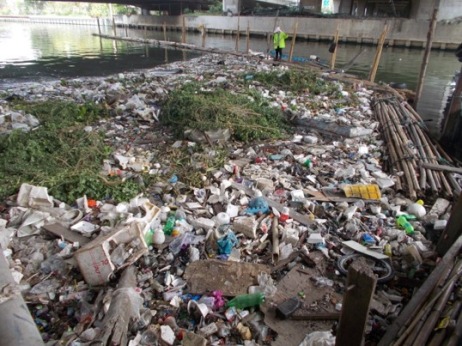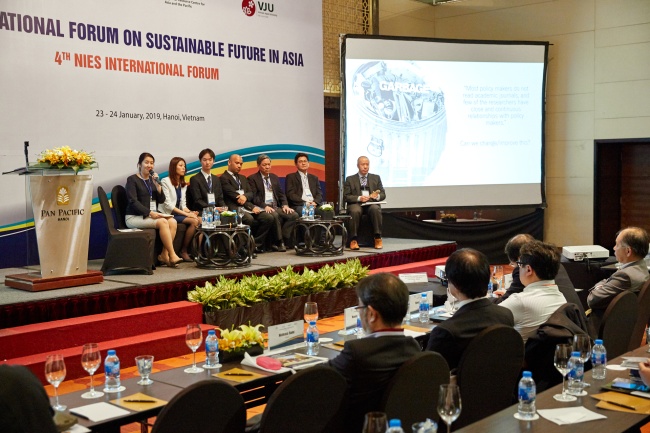Garbage the culprit? How to prevent urban flooding in Asia
NIES International Forum Report, Part 2
Southeast Asian cities are plagued by frequent floods. Why do such floods occur in urban areas?

Session 1: Research into Practice — a multi-disciplinary approach to solid waste management research with the aim of reducing flood risk in Asian cities
In this session, seven speakers presented the results of their research on the mechanisms causing flooding in urban areas, and participants discussed measures for preventing such flooding.
Research results point to a close relationship between solid waste and flooding. As the photograph below shows, solid waste frequently accumulates in waterways in Asian cities, thereby blocking canals and causing floods. Research has shown that solid waste from construction sites is a particularly major factor.

A video simulation provided a very clear visual depiction of how solid waste blocks waterways and how different types of waste affect water flow in different ways. Because lightweight waste such as polystyrene foam tends to float, it does not block water channels, but timber and other heavy waste sinks and blocks canals causing water levels to rise and increase the risk of flooding.
In addition to research on mechanisms causing floods, the results of research on waste disposal behavior were also presented. Interviews and other qualitative surveys indicated the importance of raising awareness as to how careless disposal of waste can adversely affect the living environment.

The panel discussion at the end of the session focused on measures for preventing urban flooding. Alongside their research, the presenters’ research teams are seeking to resolve this problem through such activities as holding seminars on preventing careless waste disposal and producing videos to raise public awareness. Changing this awareness is not easy, and requires sustained long-term efforts to nurture understanding of the problem through presentation of compelling scientific evidence.
The second session looked at new strategies for adaptation to environmental changes in the Mekong River watershed.
Written by Yuri Sugimoto (Research Project Collaboration Division)
Photos by Seiji Narita (Public Relations Office, Planning Department)